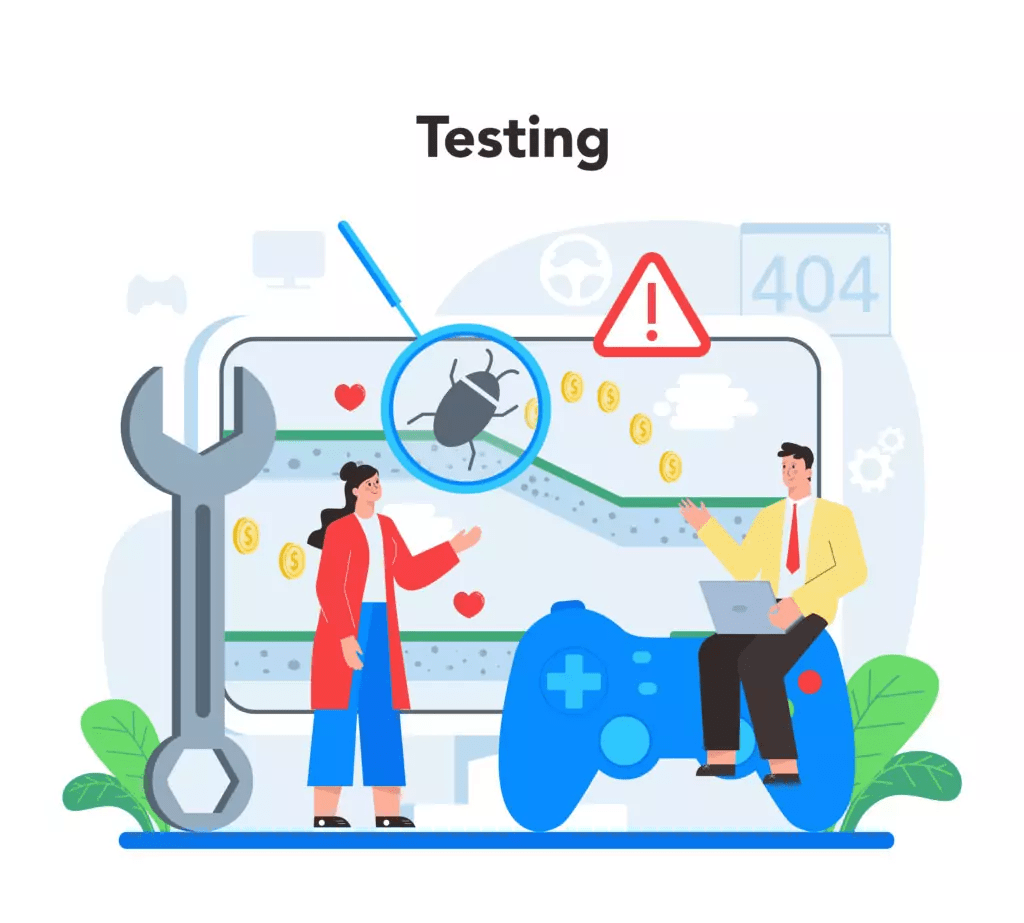Are you frustrated by frequent crashes, system errors, slow performance, or incorrect outputs? Are users struggling to navigate or use your application? Do you face compatibility issues across devices or platforms, or concerns around security vulnerabilities and data breaches?
If you answered yes to any of these questions, it is time to invest in quality testing for your application.
At Mallow, we do more than build new applications. We also help improve the quality of existing systems. When clients approach us with live applications, we conduct comprehensive quality testing and audits. This helps us identify stability issues, performance gaps, and reliability concerns. Based on these findings, we provide tailored recommendations and solutions to improve application quality.
By reading this article, you will gain a clear understanding of why quality testing is essential for modern applications. You will learn how it helps identify and resolve defects early, resulting in more stable and reliable software. You will also understand how quality testing improves consistency, strengthens user trust, and enhances overall brand credibility through better user experiences.
Why is it critical to conduct quality testing for my application?
1. Identify defects and bugs
Comprehensive testing helps uncover software issues such as functionality errors, logic flaws, and coding defects. Detecting these problems early allows developers to fix them before the application reaches users. This reduces user frustration, prevents negative feedback, and avoids costly fixes after release.
2. Improve the user experience
Usability testing and user feedback help teams understand how real users interact with the application. These insights reveal pain points, preferences, and areas of confusion. Based on this feedback, developers can improve the interface, refine navigation, and create a smoother and more intuitive experience. A better user experience leads to higher satisfaction, stronger engagement, and improved adoption rates.

3. Build trust and credibility
Quality testing ensures that the application works as expected, produces accurate results, and protects user data. When users experience a reliable and secure application, they are more likely to trust it. Consistent performance builds credibility, encourages repeat usage, and supports positive word of mouth.
4. Comply with standards and regulations
For industries with legal or regulatory requirements, quality testing verifies that the application meets compliance standards and industry best practices. This includes data protection, accessibility, and security requirements. Compliance reduces legal risk and demonstrates a strong commitment to ethical and responsible software practices.
5. Improve return on investment
Identifying issues early in the development process helps prevent expensive rework, customer support costs, and post launch bug fixes. A well tested application performs better in the market, attracts more users, and receives positive reviews. This directly contributes to higher returns on your development investment.
6. Protect your brand reputation
A stable and well tested application reflects positively on your brand. It builds customer confidence and strengthens long term relationships. In contrast, poor quality applications can damage credibility, result in negative reviews, and lead to customer churn.
7. Ensure stability and reliability
Stability and reliability are essential for any successful application. Quality testing validates how the application performs under different conditions such as heavy traffic, diverse user data, multiple devices, and varying network environments. By identifying crashes, performance bottlenecks, and system failures early, testing helps deliver an application users can rely on consistently.
What are some common application quality testing methods?
1. Unit testing
Unit testing focuses on validating individual units of code such as functions, methods, or classes in isolation. This type of testing is usually performed early in the development cycle. It helps catch defects before components are combined and encourages clean, modular code. Unit testing also enables faster feedback, making development more agile and easier to maintain over time.
2. Functional testing

Functional testing verifies that the application’s features work as intended and meet defined requirements. Test cases are executed to confirm that each feature behaves correctly and delivers the expected results. This process helps identify functional gaps, incorrect logic, or missing requirements that must be addressed before release.
3. Integration testing
Integration testing ensures that different components, modules, or systems within the application work together correctly. It focuses on identifying issues that may occur when units interact, such as data inconsistencies, communication failures, or compatibility problems. This testing confirms that integrated components function smoothly and produce reliable outcomes.
4. Regression testing
Regression testing checks that recent changes, updates, or bug fixes have not introduced new issues or broken existing functionality. It involves re testing previously validated features to ensure they continue to work as expected. This type of testing helps maintain application stability and protects against unintended side effects caused by code changes.
5. Load testing
Load testing simulates real user traffic to measure how the system performs under expected usage. It evaluates response times, throughput, and resource usage to ensure the application can handle anticipated workloads without performance issues.
Industry trends in 2024 show that load testing is increasingly integrated early into CI and CD pipelines, using cloud scalability and real browser scenarios. This approach helps teams identify performance bottlenecks early and optimize system behavior before deployment.
6. Stress testing
Stress testing evaluates how an application behaves under extreme conditions by pushing it beyond normal operating limits. It helps identify breaking points, performance degradation, and recovery capabilities.
By simulating unusually high traffic or large data volumes, stress testing exposes architectural weaknesses and ensures the system can recover gracefully from failures without crashing.
7. Usability testing
Usability testing measures how easily users can complete tasks within the application. It focuses on user satisfaction, navigation flow, and overall ease of use.
By observing user interactions and collecting feedback, teams can identify friction points and areas for improvement. Effective usability testing improves user retention and loyalty by creating positive and intuitive experiences.
8. Accessibility testing
Accessibility testing ensures that the application can be used by people with disabilities. It validates compliance with accessibility standards such as WCAG and checks whether users with visual, auditory, or motor impairments can interact with the application effectively.
This testing helps create inclusive digital experiences and reduces legal and usability risks.
9. Security testing
Security testing identifies vulnerabilities in the application’s security framework. It includes practices such as penetration testing, vulnerability scanning, and authentication and authorization testing.
The goal is to protect sensitive data, prevent unauthorized access, and ensure compliance with security standards and regulations.
10. Third party integration testing
Third party integration testing verifies how well your application interacts with external services or APIs. It ensures accurate data exchange, reliable communication, and error handling.
When your application acts as a third party service, this testing confirms that APIs function correctly, responses are accurate, and integrations work as expected. It helps detect issues such as incorrect data formats or missing information early in the development process.
11. Localization testing
Localization testing is required when an application targets users in different regions or countries. It verifies translations, date formats, currency symbols, and region specific content.
This testing ensures the application adapts correctly to local languages and cultural expectations.
12. Compatibility testing
Compatibility testing ensures the application works consistently across different devices, operating systems, browsers, and platforms.
It helps confirm that the application displays correctly and functions as expected in various environments, delivering a seamless experience to all users.
13. End to end testing
End to end testing validates the complete system workflow by simulating real user scenarios. It tests interactions between components such as databases, external systems, and user interfaces.
This testing ensures data integrity, proper communication between systems, and smooth execution of business processes.
14. User Acceptance Testing
User Acceptance Testing evaluates whether the application is ready for release from an end user perspective. It focuses on usability, functionality, and overall experience.
UAT is usually performed by real users or stakeholders to confirm that the application meets their requirements before it is deployed to production.
A typical checklist for conducting quality testing without any hassle!
- Review the application’s functional and non-functional requirements and ensure that the testing team has a clear understanding of the expected behaviour and features.
- Define test objectives and priorities. Identify the scope and coverage of testing. Determine the test environments and configurations. And allocate appropriate resources, including hardware, software, and personnel.
- Create and maintain test cases and test scenarios. Document test procedures, including steps to execute tests and expected results. Develop a traceability matrix to link requirements to test cases.
- Prepare the test environment to mirror the production environment. Install necessary software versions and dependencies. Configure network and server settings. Ensure the availability of test data and test environments that mimic real-world conditions.
- Perform functional testing to validate expected application behaviour.
- Conduct regression testing to ensure new changes haven’t introduced defects.
- Execute performance testing to assess system response under load.
- Conduct security testing to identify vulnerabilities.
- Perform usability testing to evaluate user experience.
- Conduct compatibility testing across various devices, browsers, and platforms.
- Conduct stress testing to assess system stability under extreme conditions.
- Execute error and exception handling tests.
- Conduct boundary value analysis and equivalence partitioning tests.
- Validate integrations with third-party systems if applicable.
- Generate comprehensive defect reports for stakeholders.
- Develop and maintain automated test scripts.
- Execute automated tests to improve testing efficiency. Monitor and analyse automated test results.
- Identify and investigate performance bottlenecks.
- Define criteria for determining when testing is complete. Consider factors such as test coverage, defect density, and critical issues resolved.
- Obtain approval from relevant stakeholders to indicate completion of testing.
- Prepare test summary reports and share them with stakeholders.
A structured and thorough testing process helps identify and resolve issues before an application reaches end users. By applying the approaches discussed in this article and working closely with your in house team, you can ensure your application meets high standards of quality, stability, and user satisfaction.
If you do not have an in house team ready to plan and execute these quality testing efforts, this may be the right time to consider partnering with an application development team. If you are wondering how to prepare before starting work with a development partner, understanding the right steps early can help set the foundation for a successful collaboration. Check out our step-by-step guide to choosing the right application development team for deeper insights into how you can carry out the process without any hassle.
Still, feeling struck or wondering where to start? Feel free to reach out to us.
Author
Jagajeevan
Jagan is a successful project manager with over 8 years of experience at Mallow Technologies. With his strong leadership skills and meticulous approach to project management, Jagan has consistently delivered successful outcomes for a diverse range of client engagements. Throughout his career, Jagan has been responsible for overseeing complex projects from inception to completion. His excellent communication skills and collaborative approach enable him to understand client requirements, effectively communicate project progress, and address any concerns that may arise. Outside of his work, Jagan is an avid reader and finds solace in the world of books during his free time. He believes in continuous learning and stays updated with industry trends, management methodologies, and leadership practices through his reading habits.



